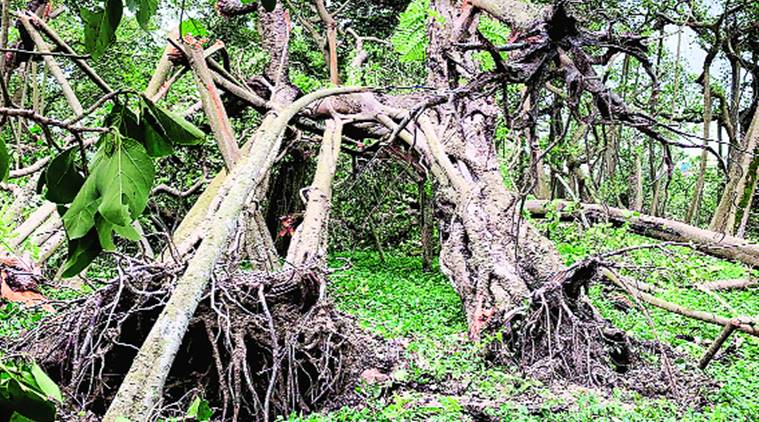The Green Banyan Tree in Howrah’s Shibpur has buffeted at least two recent cyclones – Fani and Bulbul. But a day after Amphan battered Kolkata and other parts of West Bengal on May 20, authorities took stock and found that 41 prop roots and 30 branches of the 270-year-old tree lay strewn all over or were damaged.

According to the Kolkata Municipal Corporation (KMC), as Amphan hit the city with wind speeds of 130 kmph and more, over 5,000 trees were uprooted. While several fell on houses, the others lay across roads, blocking traffic and snapping electricity, telephone and broadband cables.
Story continues below this ad
Experts now say it will take at least 10 to 15 years to bring back the lost green space, especially in Kolkata and the Sunderbans, which were among the worst affected.
“There is less than 2 per cent green cover in Kolkata. Out of about 5 lakh trees in the city, over 5,000 have fallen. That may not be a big number, but some of the trees that fell were very old and had a large canopy. The Great Banyan Tree, for instance, was spread over 4.67 acres. It will take about 10 to 15 years to get back some of the green cover that was lost in the cyclone,” said Kolkata-based environmentalist Subhas Dutta.
Blaming wrong selection of plants and poor urban planning for the loss, Dutta said, “There are underground water lines, electrical wires, cable lines, gas lines and sewage lines. So the trees planted on pavements could not have had a strong base. Besides, the selection of species was not right. Top-heavy trees like banyan, Ashoka, neem, royal poinciana, copper pod, peepal etc were used to line avenues. Also, since proper distance was not maintained between trees, their roots never went too deep.”
Besides Kolkata, the Sundarbans mangroves, critical to the unique ecology of the region and which work as a buffer to cyclones and storms covers, too, were damaged.
Story continues below this ad
Talking about the damage in Sunderbans, Chief Minister Mamata Banerjee said, “Mangroves were destroyed in huge numbers. Their restoration and planting is very important. Only mangroves can save Sundarbans.”
Talking about the damage to the Great Banyan Tree, which is spread across 4.67 acres in Howrah’s Indian Botanic Garden, director Kanak Das said, “It is one of the largest banyan trees in the world. Even during cyclones Fani and Bulbul, no major damage was done to it. But this time, it has been severely damaged. There are other rare trees which have been uprooted in the garden. We are trying to see if the tree can be healed,” said Das, adding that the tree had lost its main trunk to two cyclones, in 1864 and 1867.
Himadri Shekhar Debnath, former additional director of the Botanical Survey of India and former director of the Indian Botanic Garden, blamed poor tree management for the crisis. “There is no proper pruning mechanism. If the trees had been pruned before the season of cyclones and rains, the damage could have been minimised. Before Durga Puja every year, we see branches of trees being cut unscientifically, mostly along the side facing the road. That disturbs the balance of the tree,” said Debnath.
Bonani Kakkar, Founder President of the NGO PUBLIC, which deals with environmental issues, says that as Kolkata rebuilds its green cover, it must ensure that big trees are not planted in small lanes.
Story continues below this ad
“We must not have banyan trees or an Ashoka in small lanes. Because if they get uprooted, these trees damage vehicles, houses and roads. Small trees like Bakul are a better option in such places. Big trees are meant for parks and open spaces,” said Kakkar.

 According to the Kolkata Municipal Corporation, over 5,000 trees were uprooted. (Express photo)
According to the Kolkata Municipal Corporation, over 5,000 trees were uprooted. (Express photo)






